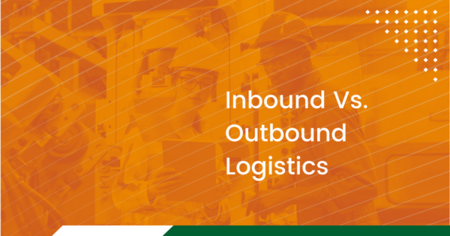What is inbound vs. outbound logistics?
Inbound logistics refers to transporting materials from suppliers into manufacturing facilities. This process involves storing and transporting raw materials, sourcing items, tracking inventory, and optimizing the movement of goods from suppliers to manufacturers. Outbound logistics refers to the direction of end products from the manufacturing facility to the buyer. This process mainly includes customer service, packaging shipments, and distribution channels.
What is the difference between inbound and outbound logistics?
We know that both inbound and outbound logistics transport goods, but what sets these two processes apart? The main difference between the two is to whom the products and goods are delivered. Inbound logistics is considered a business-to-business (B2B) process. Inbound logistics touchpoints are from the manufacturer or supplier to a company. In comparison, outbound logistics is a business-to-consumer (B2C) process where the touchpoints are from the company to the customer. Both inbound and outbound logistics are critical processes but serve two different purposes.
If your business is primarily manufacturing, your task is supervising your inbound and outbound logistics to ensure prompt production and meet your customers’ delivery expectations. Proper coordination on levels of transportation will help you become the most vital connecting point throughout the whole supply chain cycle.
How to enhance your inbound and outbound logistics?
Successful supply chain management requires you to combine inbound and outbound logistics operations in a way that covers all types of transportation needs. Although it sounds challenging, there are a few methods of optimizing your supply chain activities with guaranteed results.
Build good relationships with suppliers
Building strong supplier relationships is the foundation of inbound logistics. Start by identifying the partners that provide the most competitive pricing and quality. It will guarantee seamless manufacturing and eliminate delays caused by the change of suppliers.
You also must ensure the company has quality certifications, optimal lead time and delivery rates, and a supply capacity that meets your expectations. It’s critical that your vendor maintains discussed supply volumes and notifies you in case of any shifts. Thus, you’ll verify your vendor’s business goals align with yours to reach a mutual benefit.
Optimize inventory management
High inventory accuracy is one of the vital components of straightforward outbound logistics. As long as you clearly understand what items you have in store, processing the customers’ orders will be fast and easy.
Besides, effective inventory management will help you prevent common stock issues, such as understocking or excessive supply. Whether you store products at your own facilities or in a warehouse, monitor your commodity quantity and quality regularly.
Consider load consolidation
Load consolidation is a popular way of delivering freight of moderate size while staying cost-effective. Less-than-truckload (LTL) freight combines shipments from multiple businesses into one truckload. It allows the company to save on shipping costs if it handles smaller, infrequent loads since you only pay for the space you use.
In addition, consolidating inbound shipments reduces delivery congestion and forms a more reliable timetable for distribution centers. You can also address load consolidation for your outbound logistics. While you schedule larger shipments to book the required capacity in advance, you may consolidate smaller deliveries to keep the transportation affordable.
Implement a transportation management system
With an industry-like supply chain, there are multiple ways to achieve, enhance and maintain visibility. However, utilizing a transportation management system (TMS) is highly practical.
A TMS will allow you to access dynamic freight charges based on the present market situation. It will enable you to see real-time vendor allowances, which will help you enhance your inbound logistics and pay the best rate possible.
With a TMS, you can ensure optimal delivery performance and consistent customer satisfaction. Increased visibility lets your buyers quickly access shipment tracking tools and stay updated on their deliveries’ status.
Inbound and outbound logistics with 3PL
For an effective inbound and outbound logistics process, supply chain managers must consider multiple factors like shipment weight, fuel costs, transport timetables, and availability of trucks and drivers. Partnering with an experienced third-party logistics (3PL) provider makes this process easier and more cost-effective. Besides, a professional shipping provider will help you stay on track when managing inbound and outbound logistics.
As a leading logistics provider, PLS Logistics Services has three decades of experience providing customers with sophisticated logistics and transportation solutions. We understand the complexity of your business and provide solutions to face your critical challenges head-on.


